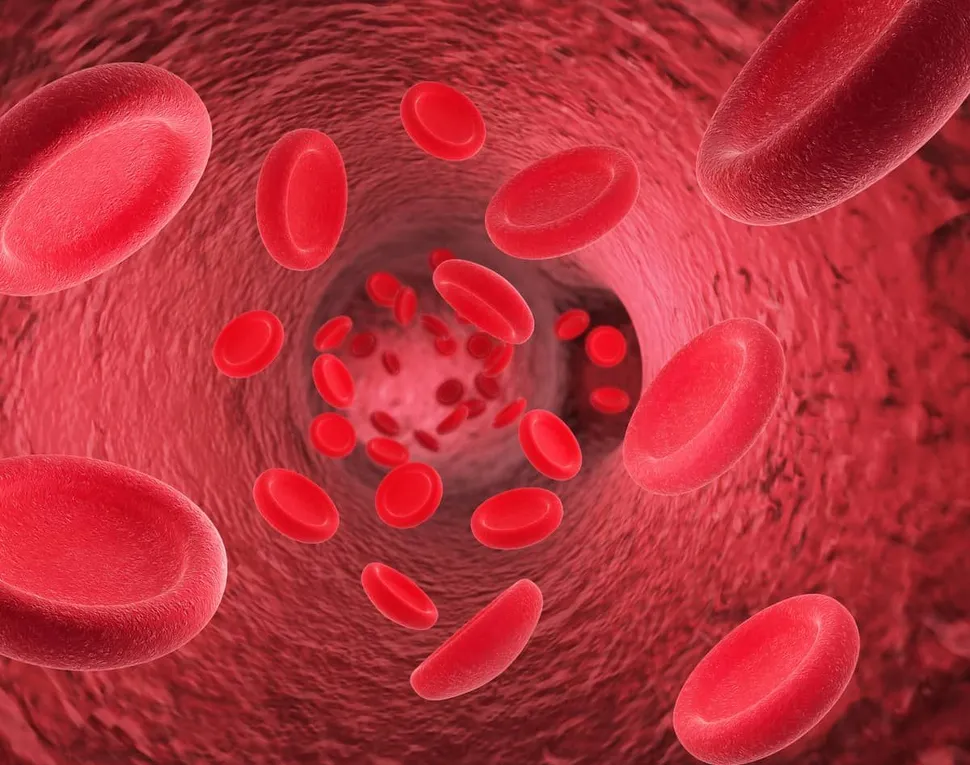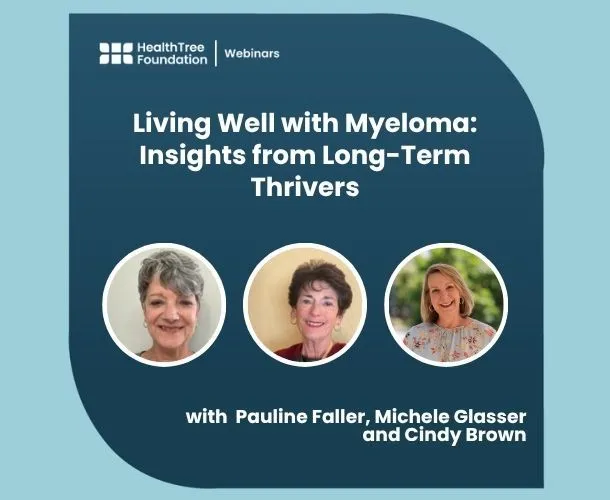TMA, a Rare Complication of Stem Cell Transplants

The title of this post is somewhat misleading in that the word ‘complication’ may conjure up a host of reasons why not to consider stem cell transplants (SCT). To the contrary. This post actually will turn out to be GOOD news.
First, what is TMA? TMA is shorthand for thrombotic microangiopathy (more in a bit). In specific, this post is about stem cell transplant related TMA (HSCT-TMA). The treatment regimens that we are familiar with (conditioning regimen prior to transplant, toxicities associated with immune-suppressive drugs as well as infections that may occur during our treatment), may cause injury to endothelial cells. Graft-versus-Host-Disease (GvHD) in allo stem cell transplants is also a leading cause for TMA. The endothelium is a single, fragile, layer of cells that line all the blood and lymph fluid carrying vessels in the body, including the chambers of the heart as well as the ‘filters’ in your kidneys. You may not know that it exists, but it plays a vital role in keeping you alive. An average person has about 1 kg (2.2 lbs.) of endothelium and its total surface inside the body is estimated to be between 4,000 to 7,000 square meters (or 40,000 to 70,000 square feet – approximately 1 to 1.5 acres).
And what does the endothelium do?
- Monitors and controls the release of water and electrolytes in the blood
- Controls blood pressure by relaxing and contracting blood vessels, in response to hormonal or other signals
- Prevents blood from clotting inside the blood vessels by releasing anti-clotting factors when needed
- It keeps things OUT of blood vessels that shouldn’t be there and keeps things INSIDE blood vessels that shouldn’t be elsewhere
- Grows and repairs blood vessels
It does not take much imagination to start thinking of a number of health problems that may result from injury to the endothelium or to endothelial cells from our treatment for cancer. Transplant associated TMA is increasingly identified as a complication seen in both auto and allo stem cell transplants. If not promptly diagnosed and treated, it can lead to significant long-term organ damage. Thrombotic microangiopathy means that tiny blood clots have formed inside the smaller/smallest blood vessels and often manifests itself as kidney damage and kidney failure. There has been no approved treatment, to date, for the treatment of HSCT-TMA.
The good news for today, though, is that the US Food and Drug Administration has accepted the regulatory submission for the compound narsoplimab a few days ago. The Agency had labeled this drug with its rare ‘Breakthrough Therapy Designation’ and has granted its developer (Omeros Corporation) Priority Review. For all practical purposes, this means that we may say this drug come to market and into clinical practice as early as July 2021. Patients that have been treated with this drug, in accordance with the study protocol, during its clinical investigation showed a 65 % complete response rate.
This medical milestone is summarized in the Company’s press release:
‘Endothelial damage, which activates the lectin pathway of complement, plays a central role in the development of HSCT-TMA. The condition occurs in both autologous and allogeneic transplants but is more common in the allogeneic population. In the United States and Europe, approximately 25,000 to 30,000 allogeneic transplants are performed annually. Recent reports in both adult and pediatric allogeneic stem cell transplant populations have found an approximately 40-percent incidence of HSCT-TMA, and high-risk features may be present in up to 80 percent of these patients. In severe cases of HSCT-TMA, mortality can exceed 90 percent and, even in those who survive, long-term renal sequalae (e.g., dialysis) are common.’
This news may not be of value to all of us, myeloma patients, but is certainly a welcome development for those of us who will be walking the road of allo stem cell transplants.
The title of this post is somewhat misleading in that the word ‘complication’ may conjure up a host of reasons why not to consider stem cell transplants (SCT). To the contrary. This post actually will turn out to be GOOD news.
First, what is TMA? TMA is shorthand for thrombotic microangiopathy (more in a bit). In specific, this post is about stem cell transplant related TMA (HSCT-TMA). The treatment regimens that we are familiar with (conditioning regimen prior to transplant, toxicities associated with immune-suppressive drugs as well as infections that may occur during our treatment), may cause injury to endothelial cells. Graft-versus-Host-Disease (GvHD) in allo stem cell transplants is also a leading cause for TMA. The endothelium is a single, fragile, layer of cells that line all the blood and lymph fluid carrying vessels in the body, including the chambers of the heart as well as the ‘filters’ in your kidneys. You may not know that it exists, but it plays a vital role in keeping you alive. An average person has about 1 kg (2.2 lbs.) of endothelium and its total surface inside the body is estimated to be between 4,000 to 7,000 square meters (or 40,000 to 70,000 square feet – approximately 1 to 1.5 acres).
And what does the endothelium do?
- Monitors and controls the release of water and electrolytes in the blood
- Controls blood pressure by relaxing and contracting blood vessels, in response to hormonal or other signals
- Prevents blood from clotting inside the blood vessels by releasing anti-clotting factors when needed
- It keeps things OUT of blood vessels that shouldn’t be there and keeps things INSIDE blood vessels that shouldn’t be elsewhere
- Grows and repairs blood vessels
It does not take much imagination to start thinking of a number of health problems that may result from injury to the endothelium or to endothelial cells from our treatment for cancer. Transplant associated TMA is increasingly identified as a complication seen in both auto and allo stem cell transplants. If not promptly diagnosed and treated, it can lead to significant long-term organ damage. Thrombotic microangiopathy means that tiny blood clots have formed inside the smaller/smallest blood vessels and often manifests itself as kidney damage and kidney failure. There has been no approved treatment, to date, for the treatment of HSCT-TMA.
The good news for today, though, is that the US Food and Drug Administration has accepted the regulatory submission for the compound narsoplimab a few days ago. The Agency had labeled this drug with its rare ‘Breakthrough Therapy Designation’ and has granted its developer (Omeros Corporation) Priority Review. For all practical purposes, this means that we may say this drug come to market and into clinical practice as early as July 2021. Patients that have been treated with this drug, in accordance with the study protocol, during its clinical investigation showed a 65 % complete response rate.
This medical milestone is summarized in the Company’s press release:
‘Endothelial damage, which activates the lectin pathway of complement, plays a central role in the development of HSCT-TMA. The condition occurs in both autologous and allogeneic transplants but is more common in the allogeneic population. In the United States and Europe, approximately 25,000 to 30,000 allogeneic transplants are performed annually. Recent reports in both adult and pediatric allogeneic stem cell transplant populations have found an approximately 40-percent incidence of HSCT-TMA, and high-risk features may be present in up to 80 percent of these patients. In severe cases of HSCT-TMA, mortality can exceed 90 percent and, even in those who survive, long-term renal sequalae (e.g., dialysis) are common.’
This news may not be of value to all of us, myeloma patients, but is certainly a welcome development for those of us who will be walking the road of allo stem cell transplants.

about the author
Paul Kleutghen
I am a patient diagnosed in 2014 with primary plasma cell leukemia (pPCL), a rare and aggressive variant of multiple myeloma and have been very fortunate to find successful treatment at the division of Cellular Therapy at the Duke University Cancer Institute. My wife, Vicki, and I have two adult children and two grandsons who are the ‘lights of our lives’. Successful treatment has allowed Vicki and I to do what we love best : traveling the world, albeit it with some extra precautions to keep infections away. My career in the pharmaceutical industry has given me insights that I am currently putting to use as an advocate to lower drug pricing, especially prices for anti-cancer drugs. I am a firm believer that staying mentally active, physically fit, compliant to our treatment regimen and taking an active interest in our disease are keys to successful treatment outcomes.
More on Treatment Advances
Trending Articles




Get the Latest Multiple Myeloma Updates, Delivered to You.
By subscribing to the HealthTree newsletter, you'll receive the latest research, treatment updates, and expert insights to help you navigate your health.
Together we care.
Together we cure.
3x Faster.












